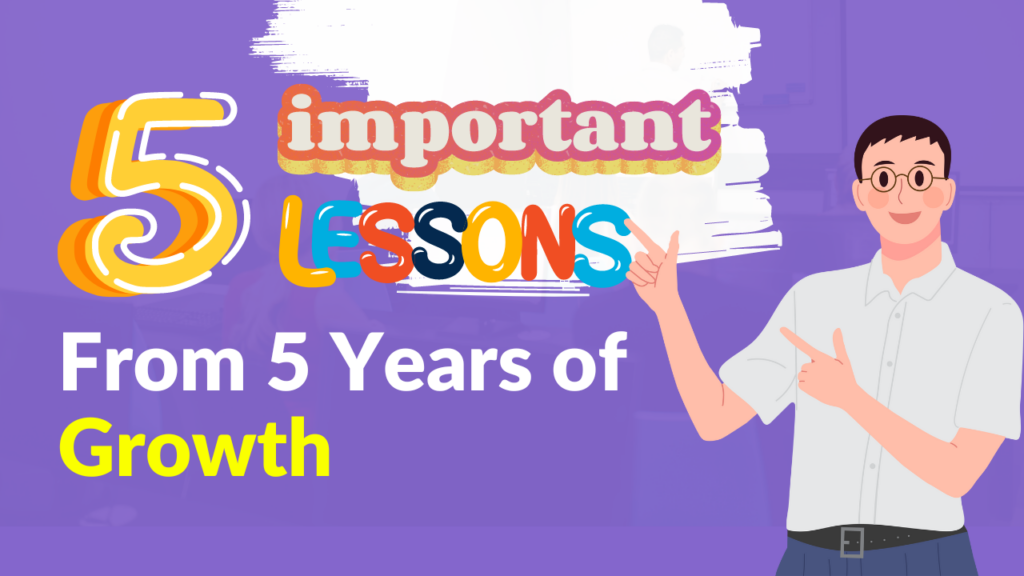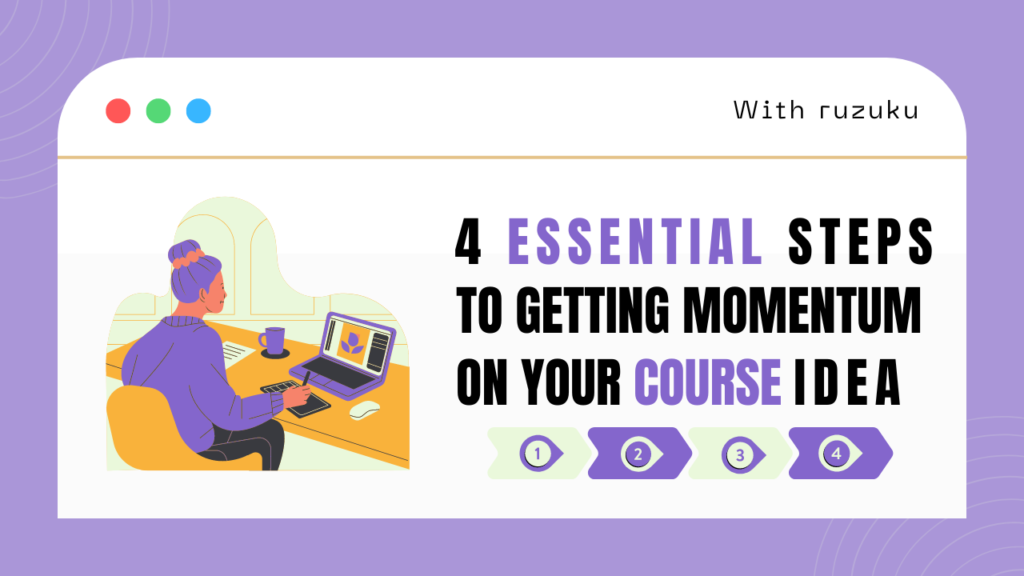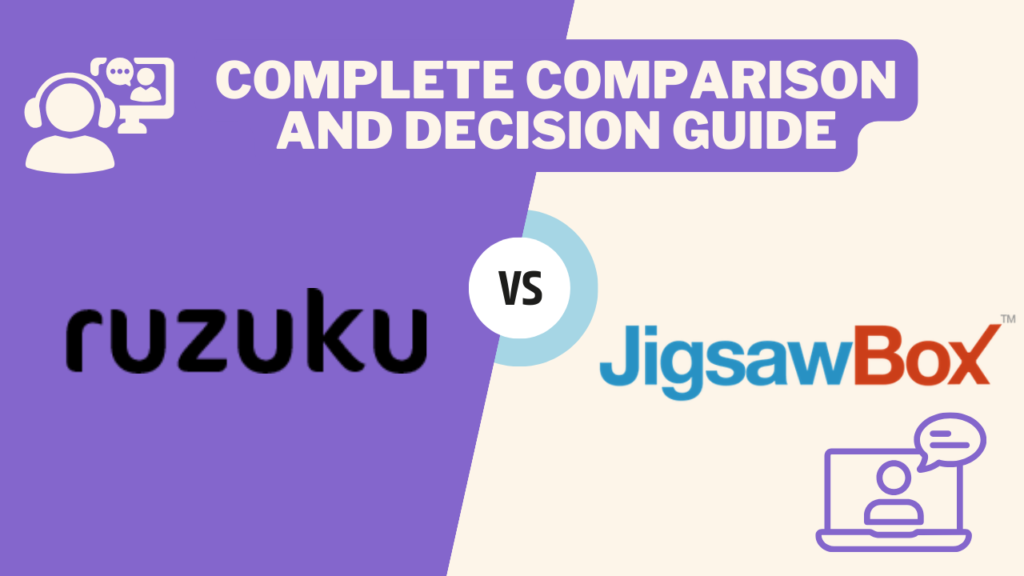
Admit it: you have big dreams.
They may be as simple as wanting to have a positive impact on the people around you or in your local community.
Or, maybe you dream of building your own business and hiring some other awesome people to work with you. And maybe your dreams are huge and you want to create change on a global scale.
It turns out that you’re in good company, because we have dreams too!
I’ll let you in on a secret: we didn’t start with giant ambitions… we just had an itch to do our own thing. To create the kind of product we wanted to use, and the type of company we’d want to work at.
Let’s face it — we were well-intentioned, but naïve.
And over the past five years, well, we’ve learned a thing or two about the journey.
Since we want you to be able to learn from our successes (and our mistakes), I’d like to share some lessons that we’ve learned along the way.
Lesson 1: Avoid Shiny Objects
Oh, those shiny, shiny objects. These days, they’re everywhere.
You can’t open your email without hearing about the next great advance in technology, or the newest must-use social media platform. If you listened to every guru out there, you could spend years madly dashing about — chasing their recommendations but getting absolutely nowhere with your business.
What we have learned the hard way: if you start on a particular business strategy or marketing tactic, then move on quickly after getting some initial results, you’ll end up wasting a lot of time and effort. You need to be consistent, to focus on one area, and let it grow over time.
To use Ruzuku as an example — we didn’t have an audience when we were starting out, so we took a very personal, and manual approach to seeking customers. We reached out individually to coaches, authors and bloggers. Some of our connections came from introductions from people that we knew, but in a lot of cases we cold-emailed people – through their blogs or even connecting with them on LinkedIn – and then we asked them questions.
We asked what kind of challenges they faced, what kind of connection they wanted with their own audiences, or where they saw potential in their businesses around building online courses. By putting in the hours with one person at a time, we slowly began to build up our audience.
If we had kept going with this approach for a year — well, it might have felt like a slog. But! We would have gotten far more traction. Our initial effort would have compounded with word of mouth and personal referrals. We would have continued to get better at our outreach just through practice and experience.
This particular lesson was learned through what we didn’t do. Instead of continuing with an approach that was working, we saw that we had attracted a few customers and therefore decided that it was time to move on to something else; we thought “oh, now we’re growing, so we need to shift our focus to other things – what are the marketing gurus telling us to do?”
This is hardly unique to our situation. Consider Moz, the inbound marketing giant. Their story? They built their blog audience for years before their products took off.
It wasn’t until they had a large audience that they started raising capital and took off, seemingly overnight. What you may not realize is that it was their consistency of execution – of building their audience and creating a ton of valuable content, that paid off and led to their “rapid” success.
So the gist of this lesson is to pick one area to focus on and really make headway before you decide to move on to something else.
More focus. Less jumping around after the next bright shiny object.
Lesson 2: If You’re Going To Do Something, Do It Right
The second big lesson that we’ve learned is about resourcing projects appropriately.
This lesson comes by way of Danny Iny, founder of Mirasee (formerly known as Firepole Marketing).
The first version of his podcast wasn’t getting the results that he wanted, and when he looked at why it wasn’t at the level of quality necessary to break through to a larger audience, he had a realization. There wasn’t anyone at Mirasee who was dedicated to making the podcast really great, so it was just cruising along instead of growing, becoming better, and having a significant impact.
So, he hired Audra Casino to take over the podcast, and Business Reimagined has now become the podcast Danny had always intended it to be. Danny believes that you’ve got to resource projects properly. You have to devote the time to do it right. And by hiring someone dedicated to the project, he was able to make it happen.
We’ve seen the exact same things in our business. It’s easy to come up with ideas, and it’s actually not that hard to push through to a first level of execution — as long as you don’t take on too many things at once, you can get a version 1.0 of something up and running, and out the door.
The hard part is putting enough resources into the effort — resources to execute deeply and get meaningful results. This means not just slapping up a Facebook ad, but really digging in to what the results are, and then putting out version 2, version 3, version 8… and continuing until you’re getting the results that you want.
There’s a big gap between initially coming up with an idea and executing it really well. This gap shrinks in proportion to how many resources you put on the project. Guess what? We’re back to focus.
As entrepreneurs and solopreneurs, we often get excited about ideas — unfortunately, in our excitement we may start moving forward on ideas without investing the resources to get real results. The lesson here is that if you can’t really put resources into something… then chances are, you shouldn’t be doing it at all.
If you’re thinking about launching 5 courses this year, how about focusing on just 1 and putting everything you can into making it amazing?
Lesson 3: Education Isn’t What You Think It Is
Our third lesson today comes about because the way we think about education is often backwards.
There’s a natural tendency for course creators to think about education as essentially providing information, based on their unique experience (and secondarily coming up with a clever way to package and sell that experience).
While that unique experience is often a strong factor in what makes the information valuable to a potential student, it leaves out a very important aspect of education. Education is about helping people take action and get some kind of result or movement or experience from your course.
Feeling dissatisfied with signups, results, or engagement in your course? Look to your mindset, your underlying beliefs about education. It’s actually quite a difficult mindset to shift — to put yourself back in the shoes of your participant, instead of focusing on your experience as the expert.
Another result of this misconception: people often think “hey, I have this great idea and I’m going to make a course about it.” Rather than figuring out exactly what their audience wants to learn, they jump right in based on their own assumptions about what course they “should” create.
Selena Soo is a great example of someone who has really focused on creating her courses based on asking what her audience wanted, and only then taking steps to build it out. She spent time personally engaging with the people who signed up for her list and only moved to offering courses when the audience started asking for lower-priced options for working with her.
In the linked Mixergy interview, she says,
“I think that first you need to make sure that people are going to buy, otherwise there’s no point of having the course. That’s number one. You’re really creating something. Not just the ideas that you want to share but what do people actually want, and are going to invest money and time into learning? That’s definitely step one.”
Lesson 4: Do It For The Love
In our culture, there’s a huge focus on outcomes. On big successes, especially financial successes. We’re constantly chasing the pot of gold at the end of the rainbow.
Reality check: there aren’t many big pots of gold lying around. We must clear our heads to build meaningful businesses that bring value to the world while being enjoyable to work on.
Many industries seem to have lost sight of this balance. In tech, we’re taught to sprint to the exit — to work as hard as you have to, sacrificing whatever it takes (which usually ends up being everything), so that at the end you have a big sale and you’re rich, and you can retire at the age of 30.
It doesn’t work that way for the vast majority of companies. So often we find that founders are setting themselves up for failure from day one, dreaming of acquisition where one will never come.
The lesson I hope that everyone can take away from this is that you should try to focus from day one on doing it for the love. Not in the sense of “follow your passion” (which I don’t really believe in) — but in the sense of loving the process and the work.
This means getting better at serving your customers, focusing on connecting with your audience and really making a difference for them. That should be the driving force behind your business, rather than the pot of gold at the end of the rainbow.
Do it for the love. The love of your customers, and the love of throwing yourself into work that matters.
Lesson 5: There Comes A Point Where You Can’t Do It All
As you build your business, there’s probably going to be a point where you can’t do everything all by yourself.
Some people may decide to keep their business small enough that they only need one person to run things, and maybe a virtual assistant or two. But, when you’re focused on growth and scaling your business up, you often reach a crossroads where you need to hire in order to resource all of your projects appropriately.
That’s why we’ve made the move from a trio of founders to the rapidly growing team that makes up Ruzuku today. In order to grow the business and grow our positive impact for our customers, we needed to assemble an amazing team.
Our blog is one of the resources that ties together the first two lessons — we started writing all those years ago because it was something we were “supposed” to do, and it’s never really gotten the love that it deserves in order to flourish and grow. And that’s why we made a key decision at the end of this past year.
Today, I have the pleasure of introducing you to Jessica Glendinning, who is taking over our blog moving forward. She is a student of Jon Morrow and a former member of the Editorial Team at Mirasee — and she’s been living and breathing this blogging thing for as long as we have been building Ruzuku from the ground up.
Now that we have a dedicated writer on the team who is focused on the blog, we can grow it the way that we had always intended.
Start Where You Are & Begin Today
Now that you’ve taken a peek behind the curtain here at Ruzuku, we hope that you have some good takeaways that you can apply to the first years of growing your own business.
The overarching lesson that I kept coming back to as I wrote this post is that a beneficial idea, applied consistently (and with love) can make the difference between a business that succeeds and one that never makes it off the ground.
As always, we would love to hear your experiences in the comments. Which lesson was your favorite? What other lessons have you learned that you would like to share with the community?
And stay tuned next week, when Jessica officially takes over the blog. I hear that she may be dropping some major hints about what’s in the works!





6 Responses
This was super timely for me – thanks for the inspiration and affirmation at just the right moment.
And…you guys are definitely doing it right – I have nothing but rave reviews from the students in my online course!
Thanks so much for the great feedback, Liza! It’s always great to hear that a post came at just the right time.
Hi Abe, Excellent blog post! I love the entire piece but especially for me, a k12 teacher trying to transition, “Education is about helping people take action and get some kind of result or movement or experience from your course.” really hit’s home. It’s not easy going from being one type of teacher to the other, and is way different from what I was taught, but it’s so right! Thanks for all your help.
Thanks so much, Renee. I hear you – transitioning to different subject matter is never easy, but we’re here to help however we can. Don’t hesitate to reach out if you have questions as you make the switch!
I have a passion on trying to help people’s lives become better. Will I need to have a web domain to use the service?
Thanks.
Scott R. Davis
Hi Scott! So sorry about the delay in responding to you. To answer your question, any courses you create with us would be located on Ruzuku’s web domain.